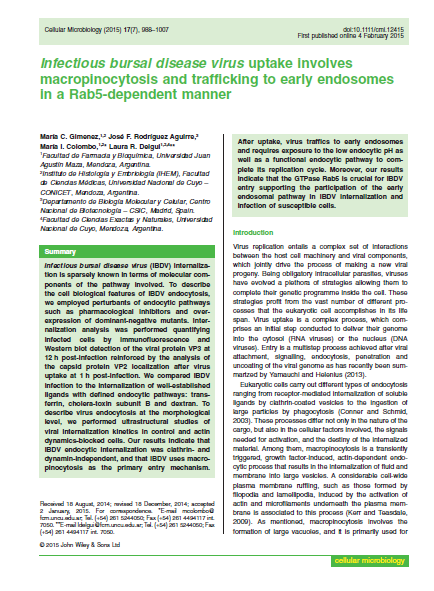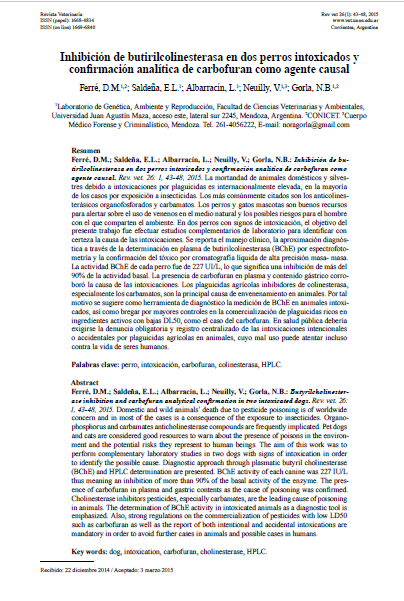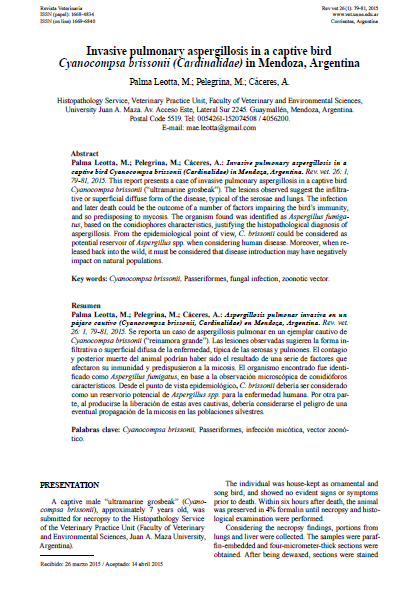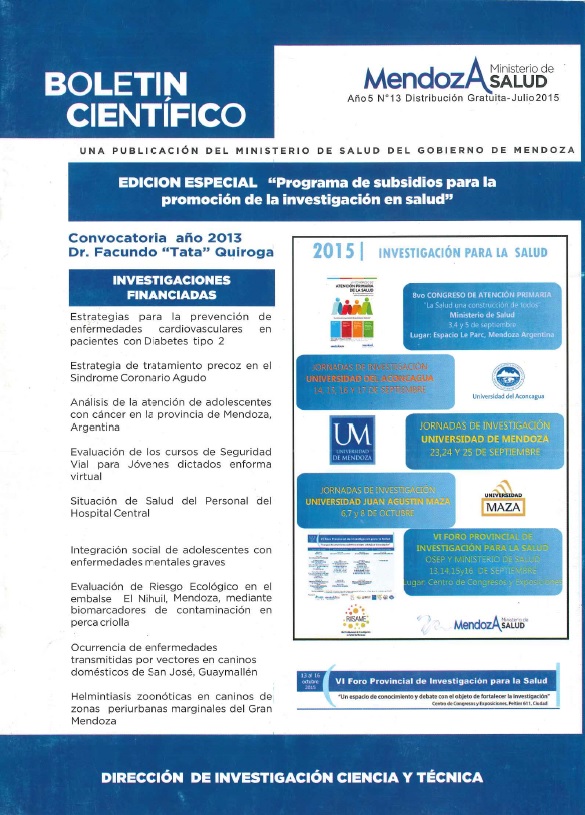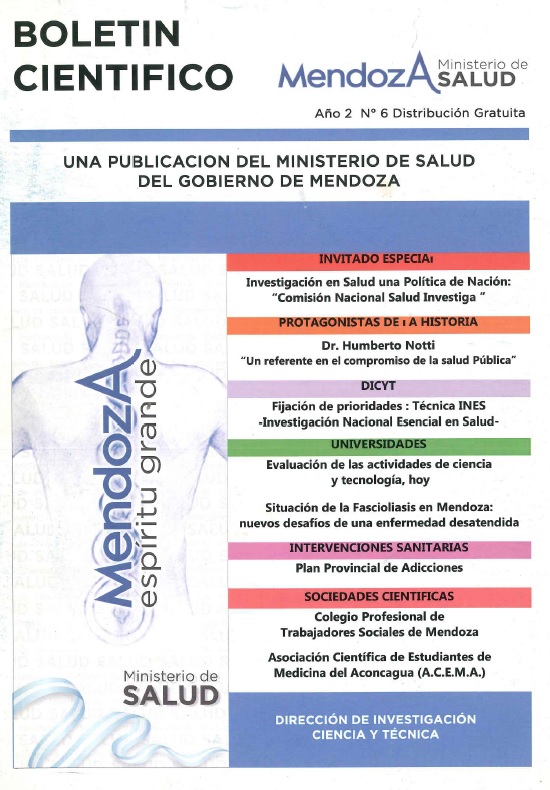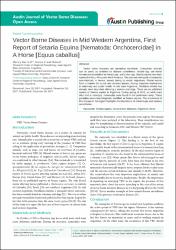Browsing Ciencias Veterinarias by Title
Now showing items 11-17 of 17
-
Infectious bursal disease virus uptake involves macropinocytosis and trafficking to early endosomes in a Rab5-dependent manner
(Comité editorial Cellular Microbiology, 2015-01-07)Infectious bursal disease virus (IBDV) internalization is sparsely known in terms of molecular components of the pathway involved. To describe the cell biological features of IBDV endocytosis, we employed perturbants of endocytic pathways such as pharmacological inhibitors and overexpression of dominant-negative mutants. Internalization analysis was performed quantifying infected cells by immunofluorescence and Western blot detection of the viral protein VP3 at 12 h post-infection reinforced by the analysis of the capsid protein VP2 localization after virus uptake at 1 h post-infection. ... -
Inhibición de butirilcolinesterasa en dos perros intoxicados y confirmación analítica de carbofuran como agente causal
(Comité editorial Revista Veterinaria, Facultad de Ciencias Veterinarias de la Universidad Nacional del Nordeste (UNNE), 2015)La mortandad de animales domésticos y silvestres debido a intoxicaciones por plaguicidas es internacionalmente elevada, en la mayoría de los casos por exposición a insecticidas. Los más comúnmente citados son los anticolinesterásicos organofosforados y carbamatos. Los perros y gatos mascotas son buenos recursos para alertar sobre el uso de venenos en el medio natural y los posibles riesgos para el hombre con el que comparten el ambiente. En dos perros con signos de intoxicación, el objetivo del presente trabajo fue efectuar estudios complementarios de laboratorio para identificar con certeza ... -
Invasive pulmonary aspergillosis in a captive bird Cyanocompsa brissonii (Cardinalidae) in Mendoza, Argentina
(Comité editorial Revista Veterinaria, Facultad de Ciencias Veterinarias de la Universidad Nacional del Nordeste (UNNE), 2015)Se reporta un caso de aspergillosis pulmonar en un ejemplar cautivo de Cyanocompsa brissonii (“reinamora grande”). Las lesiones observadas sugieren la forma infiltrativa o superficial difusa de la enfermedad, típica de las serosas y pulmones. El contagio y posterior muerte del animal podrían haber sido el resultado de una serie de factores que afectaron su inmunidad y predispusieron a la micosis. El organismo encontrado fue identificado como Aspergillus fumigatus, en base a la observación microscópica de conidióforos característicos. Desde el punto de vista epidemiológico, C. brissonii debería ... -
Ocurrencia de enfermedades transmitidas por vectores en caninos domésticos de San José, Guaymallén
(Dirección de Investigación, Ciencia y Técnica. Ministerio de Salud. Mendoza, 2015)Las enfermedades transmitidas por vectores (ETV) impactan sobre la salud animal y humana, representando un 17% de las enfermedades infecciosas. Recientemente, por causas diversas, el interés por ellas ha ido en aumento. Consideradas propias de regiones tropicales, se han diseminado ampliamente, emergiendo en regiones templadas. Los animales de compañía no son ajenos a esta realidad: los perros pueden ser reservorio de alrededor de 30 agentes zoonóticos. En caninos, la co-infección por patógenos transmitidos por vectores es frecuente y, a su vez, los vectores (particularmente garrapatas) pueden ... -
A Single Nucleotide Polymorphism Translates into a Radical Amino Acid Substitution at the Ligand-Binding Site in Fasciola hepatica Carboxylesterase B
(Comite editorial GENES, 2022-10-19)Fasciola hepatica anthelmintic resistance may be associated with the catalytic activity of xenobiotic metabolizing enzymes. The gene expression of one of these enzymes, identified as car boxylesterase B (CestB), was previously described as inducible in adult parasites under anthelmintic treatment and exhibited a single nucleotide polymorphism at position 643 that translates into a radical amino acid substitution at position 215 from Glutamic acid to Lysine. Alphafold 3D models of both allelic sequences exhibited a significant affinity pocket rearrangement and different ligand-docking modeling ... -
Situación de la fasciolasis en Mendoza: nuevos desafíos de una enfermedad desatendida
(Dirección de Investigación, Ciencia y Técnica. Ministerio de Salud. Mendoza, 2013-03)La fascioliasis es una enfermedad producida por los trematodos Fasciola hepatica y Fasciola gigantica, transmitida por caracoles acuáticos de la familia Lymnaeidae. Tradicionalmente era considerada una enfermedad de importancia veterinaria por el impacto que produce sobre el ganado, únicamente afectando a humanos en forma esporádica. Sin embargo, en años recientes, esta situación ha cambiado en forma drástica: de 2000 casos humanos reportados a nivel mundial entre 1970-1990, actualmente se ven afectados 17 millones de personas y otros 91 millones se encuentran en riesgo. La fascioliasis se ha ... -
Vector Borne Diseases in Mid Western Argentina, First Report of Setaria Equina [Nematoda: Onchocercidae] in A Horse [Equus caballus]
(Comité editorial Austin Journal of Vector Borne Diseases, 2017-12-05)Vector borne diseases are spreading worldwide. Companion animals can be useful as sentinels for disease surveillance. Setaria spp. are filarial nematodes transmitted by Aedes spp. and Culex spp. Setaria equina has been reported in Asia, Africa and North America. This zoonotic nematode is frequently asymptomatic in horses, except during its erratic migrations. Filarial worms have a tropism for ocular and nervous tissues, having important implications in veterinary and public health. In mid west Argentina, Dirofilaria immitis has already been described affecting a woman and dogs. There are no ...







